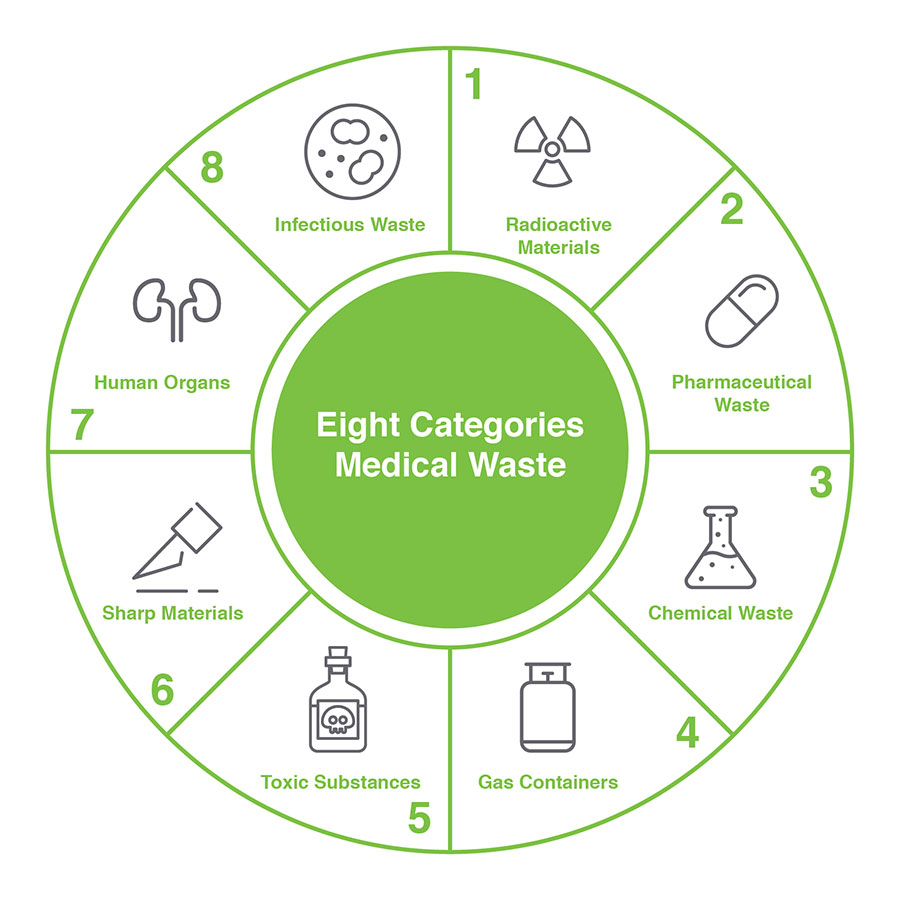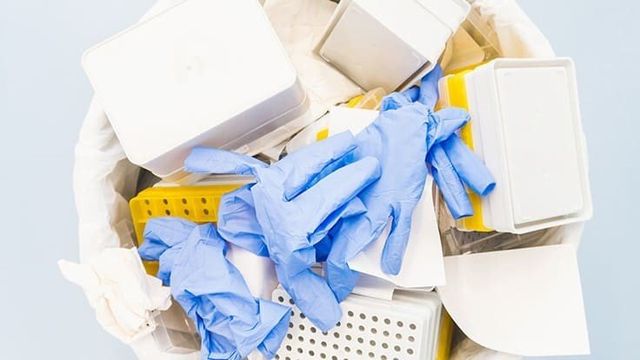Protecting Health: Unveiling the Significance of Specialist Medical Waste Removal
Protecting Health: Unveiling the Significance of Specialist Medical Waste Removal
Blog Article
Remain Ahead of Regulations: Specialist Suggestions on Medical Waste Disposal
In a world where the medical care industry is frequently developing, it is essential for clinical centers to remain ahead of policies when it comes to the proper disposal of medical waste. From recognizing the various groups of medical waste to executing the appropriate collection and partition techniques, this conversation will certainly provide workable pointers and beneficial understandings to help centers remain in advance of policies in the ever-changing landscape of medical waste disposal.
Recognizing Medical Waste Categories
Understanding medical waste groups is essential for correct disposal and administration in health care centers. Medical waste describes any type of waste produced by health care activities that might present a hazard to public health and wellness or the setting. It is vital to categorize clinical waste accurately to ensure its safe handling, disposal, transport, and therapy.
There are numerous classifications of clinical waste that healthcare centers need to be knowledgeable about. The most typical classifications consist of contagious waste, pathological waste, sharps waste, pharmaceutical waste, and chemical waste. Each category has specific standards and laws for its appropriate monitoring and disposal.
Transmittable waste consists of materials infected with blood or various other bodily fluids, such as gloves, dress, and laboratory societies. Pathological waste describes human tissues, organs, or body components that call for special delivery and disposal. Sharps waste consists of utilized needles, syringes, and various other sharp objects that can trigger injury and send infections. Drug waste consists of expired, extra, or infected medicines that require careful handling and disposal. Chemical waste includes solvents, anti-bacterials, and various other chemical substances used in healthcare centers.
Remaining Up-To-Date With Regulatory Changes
Remaining current with regulatory changes is vital for health care facilities to make sure conformity and appropriate management of clinical waste disposal. medical waste removal services. With regulations regularly progressing, it is important for medical care centers to stay updated to avoid penalties, penalties, and possible harm to the atmosphere and public health
To remain in advance of regulatory changes, medical care facilities should establish a system for monitoring and monitoring updates. This can be done by signing up for regulatory e-newsletters, going to workshops and seminars, and proactively participating in sector organizations. In addition, facilities should designate a team member or group in charge of staying educated and disseminating information to appropriate stakeholders.
Regular communication with governing agencies is likewise important. Health care centers ought to establish partnerships with local, state, and federal companies to guarantee they are mindful of any kind of modifications in policies that may affect their waste management methods. This can be done via routine conferences, engagement in public comment durations, and positive interaction with regulatory companies.
Moreover, healthcare facilities need to take into consideration partnering with waste management business that specialize in clinical waste disposal (medical waste disposal services with WasteX). These firms are typically well-versed in the current regulations and can give advice and assistance to guarantee compliance
Implementing Correct Collection and Partition Methods
To successfully take care of medical waste disposal, medical care centers need to develop proper collection and partition methods in accordance with regulative guidelines. Carrying out these methods ensures the secure handling and disposal of potentially dangerous products, secures the environment, and decreases the threat of injuries and infections to healthcare employees and the basic public.
Correct collection and partition techniques entail the usage of assigned containers and identifying systems. Health care facilities should give plainly identified containers for different kinds of medical waste, such as sharps, transmittable waste, pharmaceutical waste, and non-hazardous waste. These containers should be color-coded and plainly marked to stay clear of complication and promote simple recognition.
In addition, health care centers must educate their team on the appropriate treatments for gathering and setting apart medical waste. This consists of enlightening them on the click here for more info various sorts of waste, the ideal containers to utilize, and the importance of following standards and policies. Routine training sessions and refresher course training courses must be conducted to ensure that personnel continue to be up-to-date on ideal techniques.
In addition, health care facilities should establish a system for normal collection and disposal of medical waste. page This might include partnering with qualified waste administration companies that focus on medical garbage disposal. These business will make certain that the gathered waste is moved and thrown away in compliance with regulative needs.
Picking the Right Disposal Methods

Incineration is just one of the most efficient and usual approaches for taking care of certain sorts of medical waste, such as pathological waste and sharps. It entails the controlled burning of waste at high temperatures, decreasing it to ash. Incineration can launch dangerous pollutants into the air and add to air contamination.

Other disposal methods include chemical therapy, microwave treatment, and landfilling. Chemical therapy includes the use of chemicals to counteract the waste and decontaminate. Microwave therapy makes use of microwave power to heat and sanitize the waste. Landfilling includes burying the waste in an assigned landfill location (medical waste disposal services with WasteX). Nevertheless, landfilling needs to be the last resource as a result of the potential risk of contamination to soil and groundwater.
Guaranteeing Conformity Through Documentation and Training
After carefully considering the ideal disposal methods for medical waste, health care centers have to ensure conformity with guidelines and lessen environmental effect by executing effective documentation my latest blog post and training procedures. This action is essential in keeping a risk-free and sustainable atmosphere for both health care workers and the general public.

Health care workers who deal with clinical waste ought to obtain appropriate training on waste partition, handling, and disposal treatments. By providing comprehensive training, health care facilities can empower their personnel to make educated decisions and decrease the risk of improper waste disposal.
Final Thought
Finally, staying ahead of guidelines in clinical waste disposal is vital for medical care facilities. medical waste removal service. Recognizing the various groups of medical waste, remaining updated with governing changes, executing correct collection and segregation techniques, picking the ideal disposal methods, and ensuring conformity via paperwork and training are all vital actions. By complying with these guidelines, health care companies can successfully get rid of and handle of clinical waste in a responsible and safe way
From recognizing the various classifications of medical waste to carrying out the best collection and segregation techniques, this discussion will offer valuable understandings and actionable ideas to assist facilities stay in advance of guidelines in the ever-changing landscape of medical waste disposal. - medical waste disposal services with WasteX
The most common groups include transmittable waste, pathological waste, sharps waste, pharmaceutical waste, and chemical waste. Health care facilities need to provide plainly classified containers for various kinds of medical waste, such as sharps, infectious waste, pharmaceutical waste, and non-hazardous waste. Medical care centers ought to establish a comprehensive system to tape and track all aspects of medical waste disposal, consisting of types of waste created, quantities, and disposal techniques made use of. Health care employees that handle medical waste ought to get suitable training on waste segregation, dealing with, and disposal procedures.
Report this page